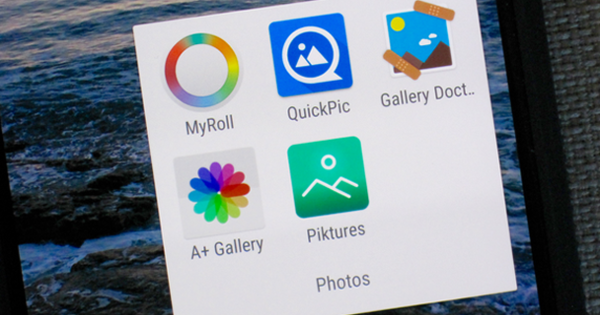ASUS is launching its thinnest laptop to date with the ZenBook UX305. In any case, I have nothing to complain about a weight of 1.2 kilograms and a thickness of 1.23 centimeters! That's not even the best thing, because the UX305 has no fan and is therefore whisper-quiet.
ASUS ZenBook UX305
Price: € 999,-
Processor: Intel Core M-5Y10 (dual core 800MHz)
Memory: 4GB RAM
Storage: 256GB SSD
OS: Windows 8.1
Connections: 3 x USB 3.0, 3.5mm headset jack, micro HDMI, SD card reader, 10/100 network connection (via USB)
Wireless: 802.11a/b/g/n, bluetooth 4.0
Dimensions: 32.4 x 22.6 x 1.2 cm
Weight: 1.2 kg
Battery: 45 Wh
8 Score 80- Pros
- Screen resolution
- Thin
- light
- Quiet
- Negatives
- 4GB RAM
- No key illumination
ASUS usually brings beautiful ultrabooks to the market under the ZenBook brand, and it has again succeeded with the ZenBook UX305. Officially, this is not an ultrabook, because a touch screen is missing. The build quality of the all-aluminium housing in a color that ASUS calls Obsidian Stone is very good. You can't press it anywhere, it's just so thin that there's no air left in it. As with previous ZenBooks, ASUS has applied the circular pattern to the display lid. The inside mat is finished. Also read: The best of 2014: 5 beautiful laptops to work on.
ASUS markets the ZenBook in two versions. The most expensive version I tested combines a high-resolution screen with a 256GB SSD, while a cheaper version combines a Full HD screen with a 128GB SSD. Both versions come with 4 GB of RAM, something that I definitely find on the more cramped side on the more expensive version. You also get three USB3.0 ports, micro HDMI, a card reader and a headset connection. In terms of network capabilities, the ZenBook includes 802.11n and bluetooth, while a wired network connection is possible with an included USB adapter.
Energy efficient
In addition to its small thickness, the UX305 may have another most important asset: it does not contain an active fan and is therefore nice and quiet. This is possible thanks to Intel's Core M processor, a chip that has so far only been used in convertibles and consumes only 4.5 watts. ASUS uses entry-level Core M-5Y10 which has a clock speed of 800MHz with a maximum turbo speed of 2GHz.
Performance
Like a mobile Core i5 processor, the Core-M is a dual-core processor with hyper-threading. The biggest difference is the much lower clock speed of only 800 MHz. In practice, the chip often switches to 2 GHz. This makes the laptop feel smooth during normal use. You can browse, use Office and watch movies just fine. The pretty good score of 4260 points in PCMark 7 confirms my experience.
It was striking that the ZenBook in Google Chrome does not work smoothly at all. Even on not very heavy websites, the browser stutters when you try to scroll. A bit strange, because in Internet Explorer I didn't have this problem. Perhaps this can be optimized with updated drivers. The 256GB SSD is made by SanDisk and achieved an excellent score of 5326 points in the PCMark 7 storage test. According to ASUS you can work for about eight hours on the tested version, but six to seven hours is more realistic. I suspect that you can work a little longer on the version with a Full HD screen.
Excellent screen
The 13.3 inch screen is both figuratively and literally an eye-catcher. The resolution of 3200 x 1800 pixels is impressive. The image is razor-sharp, with color reproduction, brightness and viewing angle being fine. It is nice that the screen has a matte finish. I also briefly saw the cheaper version with a Full HD screen and that screen also looked fine. Incidentally, Windows 8.1 is still not quite ready for the high resolution. Some parts of Windows like Device Manager still look blurry.
Nice work
The most important thing about a notebook is that you can work with it comfortably, with the keyboard being one of the most important points. The keyboard has an excellent touch and is fully integrated into the aluminum top. I do find it very unfortunate that the keyboard has no key lighting. I really expected that on the more expensive version. The touchpad is nice and spacious and generally works well. It doesn't quite reach the level of the still unbeatable touchpads of the MacBooks, but it's fine to work with. The low weight means that you can use the UX305 on your lap or on the couch without any problems. The bottom side does get a bit warm, especially on the right side.
Conclusion
ASUS' ZenBook UX305 is a very impressive notebook in many respects. The notebook is beautifully finished, thin and light. In addition, there is no active cooling, which means that it is also quiet. The latter is due to the energy-efficient Core M processor. Certainly not a speed monster, but it is fine to work with for everyday work. ASUS also impresses with the excellent 13.3 inch display which, in addition to the high resolution of 3200 x 1800 pixels, also has a good viewing angle, brightness and color reproduction. It is a pity that the most expensive version of the UX305 in the Netherlands that I tested also only has 4 GB of RAM, especially since the notebook has 8 GB of RAM for the same price in other countries. In addition, it is a pity that such a modern notebook as the UX305 does not have 802.11ac on board, again ac is used in other countries. Because of this I hesitated for a long time between a rating of 3.5 or 4 stars. In the end it became four stars with the caveat that the cheaper version with a Full HD screen seems more interesting to me. It costs 749 euros, a price that fits better with, for example, 4 GB of RAM.

